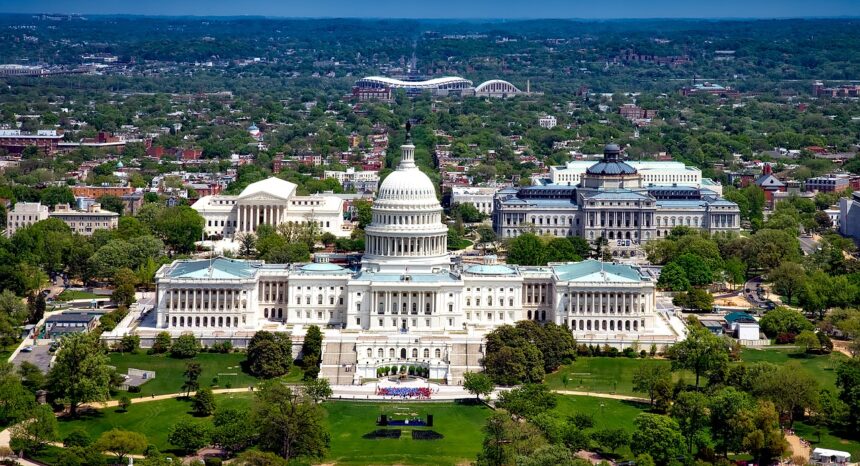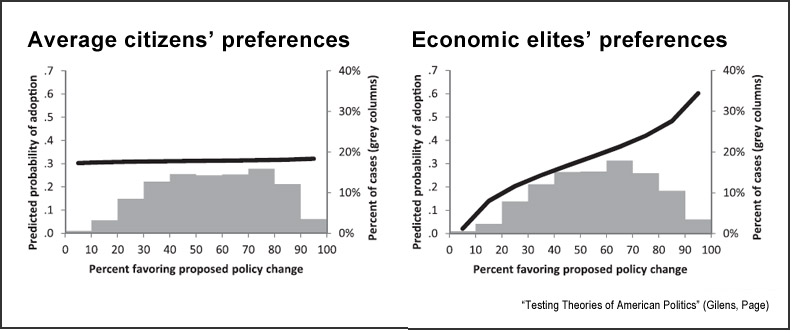Public policy in the United States is shaped by a wide variety of forces, from polls and election results to interest groups and institutions, both formal and informal. In addition to political parties, the influence of diverse and sometimes antagonistic political forces has been widely acknowledged by policymakers and evidenced by scholars, and journalists. In recent years concerns have been growing that deep-pocketed donors now play an unprecedented role in American politics — concerns supported by 2013 research from Harvard and the University of Sydney that found that for election integrity, the U.S. ranked 26th out of 66 countries analyzed.
The question of who shapes public policies and under what conditions is a critical one, particularly in the context of declining voter turnout. From both a theoretical and practical point of view, it is important to understand if voters still have the possibility of providing meaningful input into public policies, or if the government bypasses citizens in favor of economic elites and interest groups with strong fundraising and organizational capacity.
A 2014 study published in Perspectives on Politics, “Testing Theories of American Politics: Elites, Interest Groups, and Average Citizens,” analyzes the relative influence of political actors on policymaking. The researchers sought to better understand the impact of elites, interest groups and voters on the passing of public policies. The authors, Martin Gilens of Princeton and Benjamin Page of Northwestern, based their research on a database of voters’ and interest groups’ positions on 1,779 issues between 1981 and 2002, and how those positions were or weren’t reflected in policy decisions.
The scholars use the data to examine four theoretical conceptions of how American politics works and the degree of influence that parties have on the decision-making process: (1) majoritarian electoral democracy, in which average citizens lead the decision-making process; (2) economic-elite domination; (2) majoritarian pluralism, in which mass-based interest groups provide the driving force; and (4) biased pluralism, where the opinions of business-oriented interest groups weigh most heavily.
The study’s key findings include:
- Compared to economic elites, average voters have a low to nonexistent influence on public policies. “Not only do ordinary citizens not have uniquely substantial power over policy decisions, they have little or no independent influence on policy at all,” the authors conclude.
- In cases where citizens obtained their desired policy outcome, it was in fact due to the influence of elites rather than the citizens themselves: “Ordinary citizens might often be observed to ‘win’ (that is, to get their preferred policy outcomes) even if they had no independent effect whatsoever on policy making, if elites (with whom they often agree) actually prevail.”
- Regardless of whether a small minority or a large majority of American citizens support a policy, the probability of policy change is nearly the same — approximately 30%.
- A proposed policy change with low support among economically elite Americans is adopted only about 18% of the time, while a proposed change with high support is adopted about 45% of the time.
- Interest groups have a substantial impact on public policy. When mass-based and business-oriented interest groups oppose a policy, the probability of its being enacted is only 16%, rising to 47% when they’re strongly favorable. “On the 1,357 proposed policy changes for which at least one interest group was coded as favoring or opposing change, in only 36% of the cases did most groups favor change, while in 55% of the cases most groups opposed change.”
- Overall, business-oriented groups have almost twice the influence of mass-based groups.
- While the popular belief is that professional associations and interest groups serve to aggregate and organize average citizens’ interests, the data do not support this. The preferences of average citizens are positively and highly correlated with the preferences of economic elites but not with those of interest groups. Except for labor unions and the AARP, interest groups do not tend to favor the same policies as average citizens. In fact, some groups’ positions are negatively correlated with the opinion of the average American, as in the case of gun owners.
“The central point that emerges from our research is that economic elites and organized groups representing business interests have substantial independent impacts on U.S. government policy, while mass-based interest groups and average citizens have little or no independent influence,” the scholars conclude, providing “substantial support” for the theories of economic-elite domination and biased pluralism.
Related research: A 2010 study by Jacob S. Hacker of Yale and Paul Pierson of University of California, Berkeley, “Winner-Take-All Politics: Public Policy, Political Organization and the Precipitous Rise of Top Incomes in the United States,” examines structural and political explanations for rising inequality. Further, a 2014 literature review, “Advancing the Empirical Research on Lobbying,” written by John M. de Figueiredo of Duke and Brian Kelleher Richter of the University of Texas, Austin, provides an overview of leading scholarship and suggests promising social science methods and new data sources. They find that lobbying expenditures at the federal level are approximately five times those of political action committee (PAC) campaign contributions. For instance, in 2012, organized interest groups spent $3.5 billion annually lobbying the federal government, compared to approximately $1.55 billion in campaign contributions from PACs and other organizations over the two-year 2011-2012 election cycle.
Keywords: public policy, interest groups, guns, corruption, organized labor, campaign fundraising



Expert Commentary